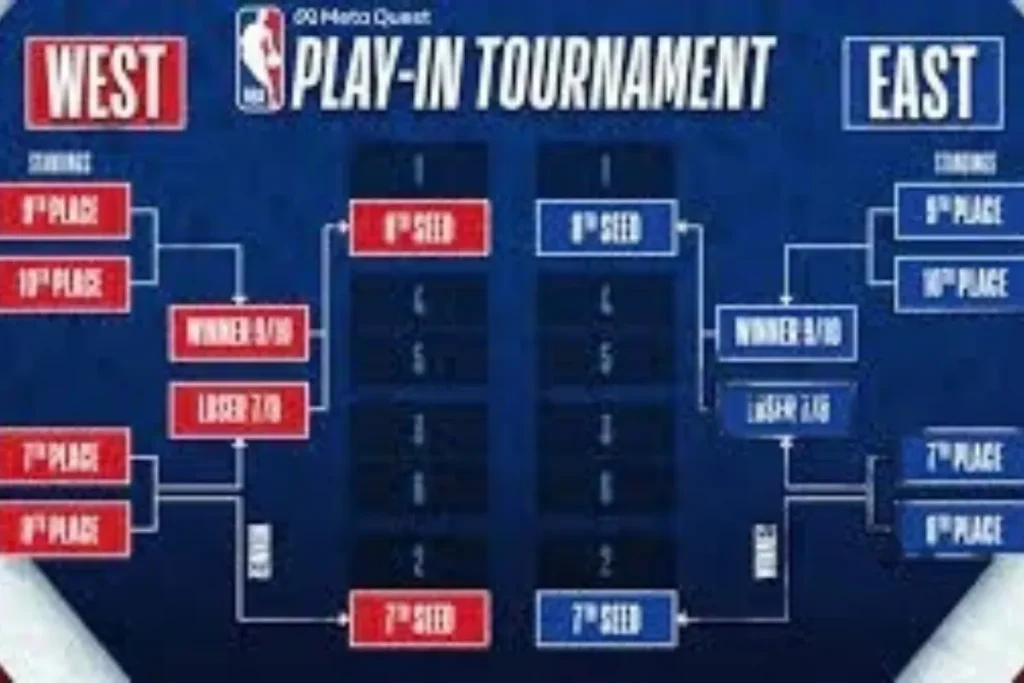How Many Teams Make The NBA Playoffs?
Are you ready to dive into the thrilling world of NBA playoffs? Well, let me tell you all about it. So, I’m sure you’ve wondered how many teams get a shot at the ultimate basketball showdown. Let me share my personal experience and take you on this exciting journey
Determining the Number of Playoff Spots
When it comes to the NBA playoffs, there’s a lot more than meets the eye. So, let’s dig deeper and uncover how the number of playoff spots is determined for each conference.
First things first, we need to know how many teams from each conference actually make it to the playoffs. Well, here’s the deal: In today’s format, 8 teams from both the Eastern Conference and Western Conference earn their golden ticket into postseason action.
A Glimpse Into But Wait! Before we delve further into this current setup, let’s take a quick trip down memory lane. The NBA playoff format has undergone some changes over time. From fewer teams making it back in the day to expansions and realignments that influenced these numbers – history plays a vital role in understanding where we are now.
Factors That Shape Playoff Spots Now that we’re all caught up on historical context, let’s explore what influences the allocation of playoff spots per conference today. It isn’t just luck or chance; several factors come into play:
- Team Performance: The better a team performs throughout its regular season campaign, the higher its chances of securing one of those precious playoff spots.
- Competitiveness: In an effort to ensure fair representation across conferences and divisions, competitiveness among teams within each conference also affects how these spots are distributed.
So you see, it takes more than sheer talent or popularity for a team to find itself competing against basketball giants in those intense postseason battles. It requires consistent performance and fierce competition amongst rival squads vying for glory.
In our next section, we’ll dive even deeper as we explore how seeding determines matchups in NBA playoffs while unraveling tiebreaker rules along with other fascinating aspects!
Evolution of Playoff Seeding Rules

Are you ready to uncover the fascinating evolution of playoff seeding rules in the NBA? Get ready to explore how matchups are determined, tiebreakers come into play, and the impact of a balanced schedule on this exciting process!
Seeding: The Key to Matchups When it comes to playoffs, seeding is everything! It’s like a chess game where each team’s position determines their opponents. In simpler terms, higher-seeded teams face lower-seeded ones. This ensures that the best-performing teams get favorable matchups early on.
Tiebreakers: Breaking Deadlocks But what happens when two or more teams have an identical record That’s where tiebreaker rules step in. To determine seedings accurately, various factors are considered:
- Head-to-Head Record: If two teams have played against each other multiple times during the season, their head-to-head record becomes crucial in deciding who gets a better seed.
- Division Winner: Winning your division can give you an edge over others vying for similar seeds.
These tiebreaker rules add another layer of excitement as they can make or break a team’s chances at securing a favorable matchup.
Balanced Schedules and Seeding Process Here’s something interesting – Did you know that changes in scheduling formats can impact how seeds are assigned? With a balanced schedule system now in place, every team faces off against one another at least twice during the regular season.
This means that no matter which conference or division they belong to, all teams compete fairly across the board. Such balance influences not only individual records but also affects how seeds are distributed among conferences and divisions.
Significance and Implications
Ah, the significance of playoff seeding in the NBA! Let’s dive into why it matters, from advantages for higher-seeded teams to statistical analysis and even its impact on player legacies and team reputations.
Advantages of Higher Seeds Securing a higher seed in the playoffs comes with some sweet perks. First off, there’s the coveted home-court advantage. Imagine playing crucial games in front of your passionate fans, feeding off their energy as you battle it out against opponents who might feel a little lost amidst all that noise.
But that’s not all – higher seeds often enjoy easier matchups early on. They face lower-ranked teams, giving them a better chance at progressing deeper into the playoffs without facing strong opponents right away.
Analyzing Success Rates Numbers never lie! When we dig into statistics based on different seedings, interesting patterns emerge. Championship wins and series victories tend to favor those top seeds more often than not. It makes sense when you consider their advantageous positions going into each round.
Impact on Legacies and Reputations Playoff performances can make or break players’ legacies and shape team reputations over time. A deep postseason run as a high seed can elevate an individual player’s status among legends while cementing a team’s place amongst dynasties.
On the flip side, failing to capitalize on favorable seeding opportunities may lead to questions about mental toughness or expose weaknesses that need addressing before another shot at playoff greatness arises.
frequently asked questions
1. What are wildcard entries and how do they affect playoff qualification?
Wildcard entries refer to unique scenarios where additional teams beyond the regular playoff spots may qualify based on specific criteria set by the league.
2. How does the concept of play-in tournaments impact playoff qualification?
Play-in tournaments provide an opportunity for teams just outside the standard playoff cutoff to compete for a chance at securing a spot in the postseason. In these tournaments, lower-ranked teams have a shot at displacing higher-seeded teams by winning crucial games.
3. Have there been instances when fewer than 16 teams made it to the playoffs?
Yes, there have been occasions when fewer than 16 teams qualified for the playoffs. For example, during lockout-shortened seasons where schedules were condensed due to labor disputes or other unforeseen circumstances, a reduced number of teams might make it into postseason action.
4. How does having fewer than 16 playoff spots impact competition and matchups?
When fewer than 16 teams make it to the playoffs, it intensifies competition as only top-performing squads earn their place amongst basketball’s elite contenders. With limited spots available, each game becomes even more significant as every team fights tooth and nail for those coveted positions.
5. Do special situations like wildcard entries or lockout-shortened seasons influence fans’ excitement and engagement with NBA playoffs?
Absolutely! Special situations add an extra layer of intrigue and excitement to NBA playoffs. They create unexpected storylines and opportunities for underdog stories that captivate fans worldwide while generating buzz both within fan communities and across media platforms.
Conclusion
And there you have it – the exciting journey through “How Many Teams Make The NBA Playoffs” comes to an end. As I reflect on the knowledge we’ve explored together, I can’t help but feel a sense of awe and admiration for the basketball world.

